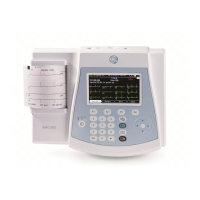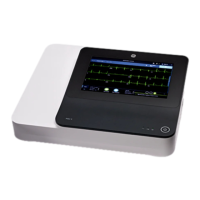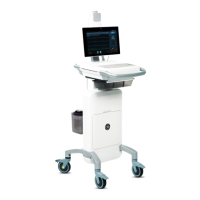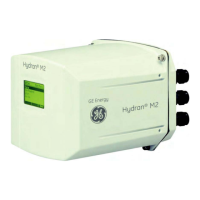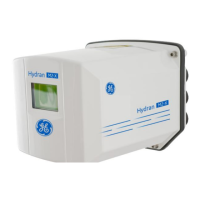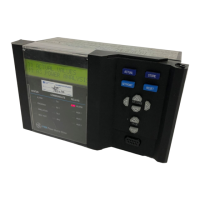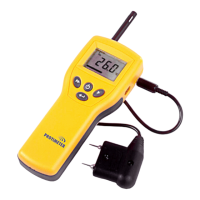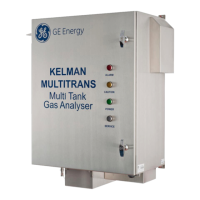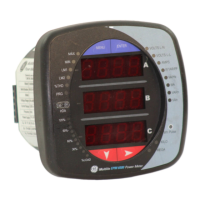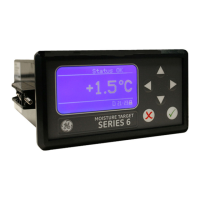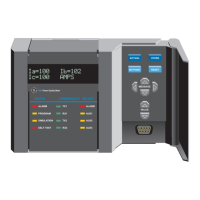2. Understanding the DMS 2 Keyboard, Menu Systems, and Displays
DMS 2 Operating Manual Page 27
TG PRIMARY MENU
TGMODE Submenu
• PROBE—Allows the user to select from a
list of compatible probes. If a dialog probe is
used, the PROBE option will automatically
be set but only when the instrument is
powered on. (Refer to Section 3.3.1 for
probe specification, and to Chapter 7 for
probe types.)
• TG (Thickness Gauge) MODE—Selects
the measurement mode, such as dual, dual
multi-echo, SIP, S-Flank, S-Peak, TopCOAT,
and Auto-V. The chosen mode must agree
with the capabilities of the probe being used.
(Refer to Section 3.3.1 for mode selection.)
• ZERO—Zeros the connected probe. The
options available depend on the probe type.
(Refer to Sections 3.3.1 through 3.3.3)
• THKCAL—Selects the type of thickness
calibration activated by
. (Refer to
Sections 3.3.1 through 3.3.4)
• VELOC—Displays the speed of sound in the
material being tested. Determined by
calibration. (Refer to Section 3.3.4.)
ALARM Submenu
• GAIN—Adjusts the instrument’s gain.
(Refer to Section 4.4.2)
• MIN—Sets the minimum thickness below
which an alarm is triggered. (Refer to
Section 3.3.2)
• MAX—Sets the maximum thickness above
which an alarm is triggered. (Refer to
Section 3.3.2)
• MINALR—Activates the minimum alarm—
visible and/or audible. (Refer to Section
3.3.2)
• MAXALR—Activates the maximum alarm—
visible and/or audible. (Refer to Section 3.3.2)
A-GATE Submenu
• GAIN—Adjusts the instrument’s gain.
(Refer to Section 4.4.2)
• A-STRT—Adjusts the starting point of the
A-gate. (Refer to Section 4.4.5)
• A-THR—Sets the screen height of the
A-gate. (Refer to Section 4.4.5)
• A-WDTH—Sets the width of the A-gate.
(Refer to Section 4.4.5)
• DELAY—Shifts the A-scan to the left or
right. (Refer to Section 4.4.4)
B-GATE Submenu
—This menu adjusts the
B-gate where applicable, with functions similar
to the A-gate selections. (Refer to Section 4.4.)
B-SCAN Submenu
—DMS 2 only. Displays a
thickness profile. (Refer to Section 4.5.)
PARAM Submenu
• GAIN—Adjusts the instrument’s gain.
(Refer to Section 4.4.2)
• PSET—Lists the stored Parameter Sets
used to define instrument configurations.
(Refer to Section 4.6)
• LOAD PSET—Reconfigures the DMS 2 by
loading an existing Parameter Set into the
active data file. (Refer to Section 4.6)
• SAVE P-SET—Saves the current
instrument configuration as a Parameter
Set file. (Refer to Section 4.6)
• DELETE PSET—Deletes an existing
PSET. (Refer to Section 4.6)

